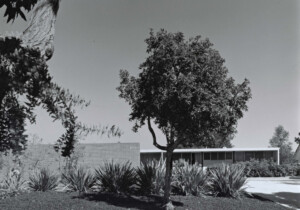Happy Friday! From a monumental re-think of the National Mall to the landmarking of a historic gay bar, here’s what you need to know as we slide into the weekend:
AIA student loan debt study finds the crushing cost of postsecondary education is driving underrepresented groups out of the profession
A report published by the AIA, following interviews with over 700 of its members, found that 73 percent borrowed to pay for college. Unsurprisingly (to most Millennials, at least), the youngest architects are the most debt-burdened, with 89 percent of professionals under 35 reporting that they borrowed to pay for their degrees. The majority of those in older cohorts also took out loans: 66 percent of architects age 55–64, 75 percent of architects age 45–54, and 86 percent of architects age 35-44 were or are debt-burdened by education.
The younger AIA cohorts tend to be more racially, ethnically, and gender diverse, so these debt loads have substantial impact on underrepresented groups’ ability to maintain careers as architects. About 44 percent of members who borrowed have thought leaving or have already left the profession. Of this group, 57 percent of women have considered leaving, compared to 39 percent of men.
Debt burdens also impact members’ decisions on where to work. Almost half of those still paying back loans reported that their financial situation impacted their choice of firm. Within this group, there’s a significant gender disparity around choice: About 23 percent of men and 44 percent of women reported their debt impacted their choice of firm.
“This data provides critical insight into how student debt is harming the profession,” said AIA EVP/Chief Executive Officer Lakisha Ann Woods, CAE, in a statement. “Through a better understanding of how debt impacts different demographic groups among our membership, this data will help us break barriers to the profession that disproportionately impact Black, Indigenous, and people of color. Our goal is to propel all architects to new professional heights.”
A new project will challenge the Old White Guy monument tradition on the National Mall
Monument Lab and The Trust for the National Mall have selected six artists for Beyond Granite, a new program that aims to commemorate the histories and tell the stories of underrepresented groups on the nation’s front lawn. Pulling Together, the first edition of the series, asks artists to address these issues through giant, monumental works to be displayed on the National Mall and around D.C.
In addition to physical works, the initiative aims to build out infrastructure for historical interpretation, storytelling, and civic engagement projects led by artists to come to a greater understanding of the purpose of monuments in the capital and beyond.
The six selected artists are Derrick Adams, Tiffany Chung, Ashon Crawley, Vanessa German, Paul Ramírez Jonas, and Wendy Red Star.
“These artists represent a set of vibrant and essential lived experiences,” said Dr. Salamishah Tillet, Pulitzer Prize–winning professor of Africana Studies at Rutgers University – Newark and the co-curator of Pulling Together, in a statement. “We are thrilled to have the opportunity to collaborate with them — and we can’t wait for their brilliance to bring vital new meaning to our nation’s most iconic commemorative landscape.”

Sports fields abound at a revamped Pier 42
The newly-reopened Pier 42 on Manhattan’s Lower East Side features a playground, bike path, a soccer field, tennis, basketball courts on an almost three-acre deck, fitness equipment, a bike path, among other amenities spread across eight acres. New York’s Mathews Nielsen Landscape Architects was the lead firm on the revamp.
The pier was erected in 1967 as a newsprint terminal and at one time Dole used the structure to import bananas; by the time it closed in 1987, it was the island’s last working pier for cargo. Since then, Pier 42 has mostly been used as a parking lot.
“The opening of the new recreational deck at Pier 42 is truly a cause for celebration, as it will provide the residents of the Lower East Side with greater access to the waterfront while providing green and recreational spaces for people of all ages,” State Senator Brian Kavanagh told The Broadsheet.
The first phase of the project, completed in 2019, removed hazardous materials from the site and preserved structural steel bays. The Broadsheet reports that the project’s third phase will consist of a park with a garden, playground, and sea-themed public art. That addition will be complete late next year.
H/t to The Broadsheet
Al Capone’s Miami Beach home slated for demolition
The Next Miami reports that there’s a pending demolition permit for notorious gangster Al Capone’s old home in Miami Beach, Florida.
The city used to make it tough to plow down homes built before 1942. (Capone’s residence was built in 1922 and is not protected by any preservation entity.) But this year, the Florida State Legislature passed a law that superseded the local ordinance, making it easier for property owners homes.
One commenter summed up the situation and offered an alternative vision for Miami Beach urbanism: “bro we could have made it like a small museum accessible from boat so we wouldn’t have to make parking lots everywhere.”
H/t to The Next Miami












Historic gay bar is now a New York City landmark
This week the New York City Landmarks Preservation Commission (LPC) designated the building that houses Julius’ Bar as an official city landmark. The bar was the site of a 1966 “Sip-In,” a protest that drew attention to discrimination against gay and lesbian New Yorkers.
That year, activists demonstrated against the city and state crackdown on bars that served gay people. The action was led by members of the Mattachine Society of New York, which was at the time the largest gay rights organization in the U.S.
The Julius’ Bar Building at 155-159 West 10th Street is within walking distance to the Stonewall Inn, another gay bar that played a crucial role in the history of LGBTQ+ rights. Stonewall Inn is a recognized National Monument, this past June construction kicked off on a visitor center for the site, where in 1969, a riot against police advanced the LGBTQ+ rights movement.
“The ‘Sip-In’ at Julius’ was a pivotal moment in our city and our nation’s LGBTQ+ history, and this designation today marks not only that moment but also Julius’ half-century as a home for New York City’s LGBTQ+ community,” said New York City Mayor Eric Adams in a statement released by the LPC. “Honoring a location where New Yorkers were once denied service solely on account of their sexuality reinforces something that should already be clear: LGBTQ+ New Yorkers are welcome anywhere in our city. Let this designation serve as an important reminder to everyone that LGBTQ+ history is New York City history and that, like Julius’, the City of New York will always serve as a safe haven for LGBTQ+ people to be safe and feel safe.”